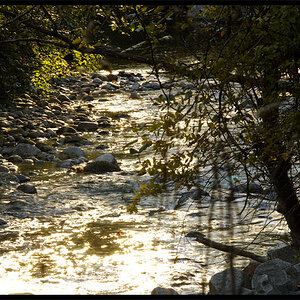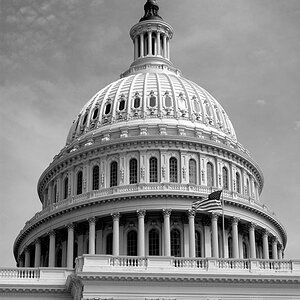fjrabon
Been spending a lot of time on here!
- Joined
- Nov 3, 2011
- Messages
- 3,644
- Reaction score
- 754
- Location
- Atlanta, GA, USA
- Can others edit my Photos
- Photos OK to edit
The maximum f-stop for a lens is defined as the focal length of the lens divided by the entrance pupil diameter. The entrance pupil diameter depends upon the design of the lens; for any particular focal length the larger the entrance pupil the faster the lens will be and , generally, the larger the lens elements required which is one of the reasons that fast lenses are usually larger, heavier and more expensive than slower versions.
For a given lens the maximum f-stop remains constant regardless of the format of the camera on which it is mounted - a f2.8 FX lens will still be a f2.8 lens on a DX body and will have the same depth of field characteristics as a f2.8 DX lens of the same focal length. What does change is the angle of view between th DX and FX formats when using lenses of the same focal length.
As far as I can see the one useful part of the Equivalence article is near the middle where there is the comment 'The point of photography is making photos'. The time spent wading through the article would be much better spent putting this into practice - I don't see anything else in the article that would improve your photography.
Well, you're right in some ways, but I think you're missing the point. A given focal length at f/2.8 will have a dramatically smaller DOF on a FX body (and thus full frame sensor) than it will on a DX body (and thus crop frame sensor). Sure, 'equivalence' doesn't change the literal definition of what aperture and f-stop means, but it is a way of figuring out what apertures you need on a crop frame to replicate the DOF of a full frame (and vice versa).
Which bit have i misunderstood? The thread has wandered all over the place since starting as '24-85mm 3.5-4.5 vs off-brand 24-70mm 2.8 - What's your thoughts?' to considering that '17-50mm/2.8 on DX is equivalent 26.5-77.5mm/4.3 on FX. So, the 28-300mm would have larger aperture at all range that the 17-50mm cover. Distortion can be corrected, but sharpness couldn't.'. The Nikon 28-300mm is f3.5-f5.6 and it is this whether or not it is used on a DX or a FX body. The fact that a lens has to be closed down further on a larger format to achieve a given depth of field has no effect on its performance on the smaller format. When either of the lenses are used the f2.8 will still be faster than f3.5-f5.6.
If you would read what people wrote instead of getting defensive, you would see that I never said you misunderstood anything. I said you missed the whole point of it.






![[No title]](/data/xfmg/thumbnail/35/35953-1a8b92df0115ff7026f31b78855ac815.jpg?1619737264)



![[No title]](/data/xfmg/thumbnail/35/35947-ab35bfc67d8e12ce65dda301d3bf2b66.jpg?1619737255)

![[No title]](/data/xfmg/thumbnail/32/32637-865ab9beec7e00237b64e4fcb8fe947f.jpg?1619735555)
